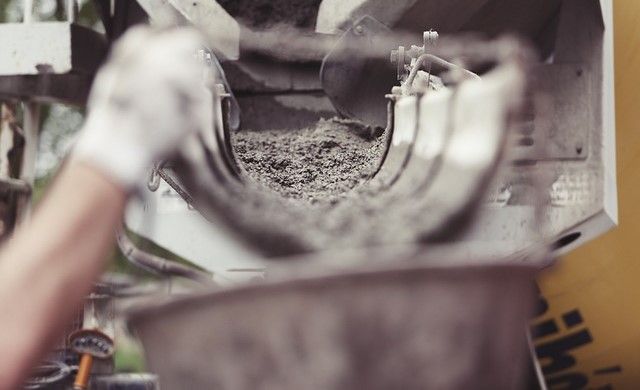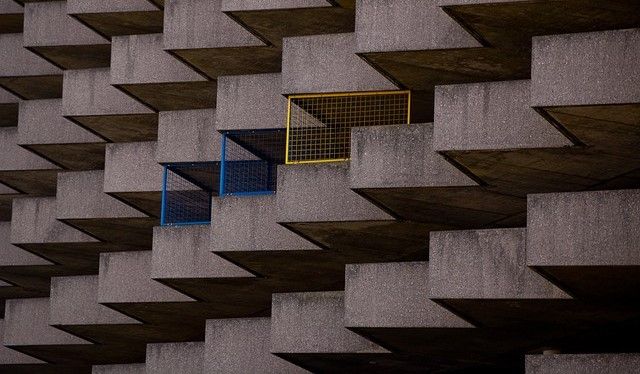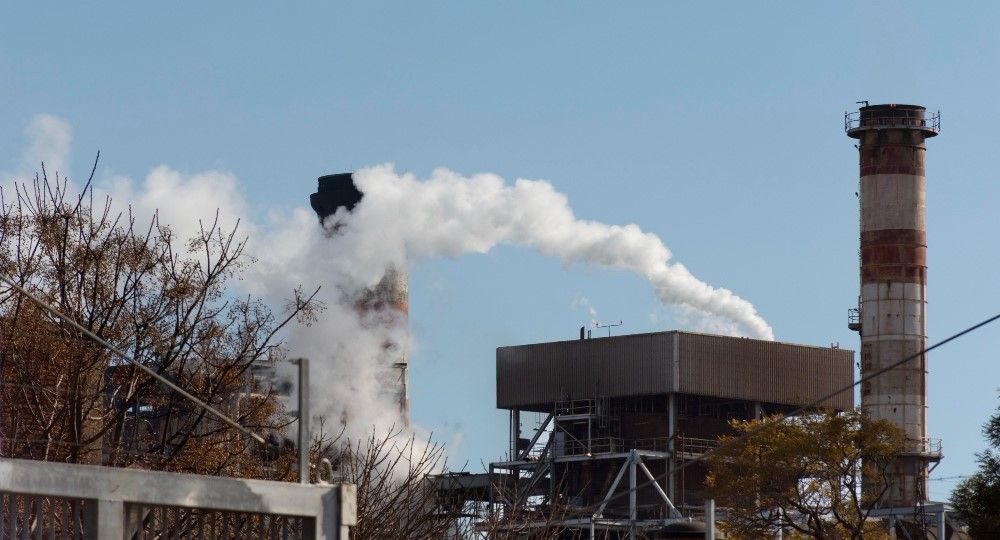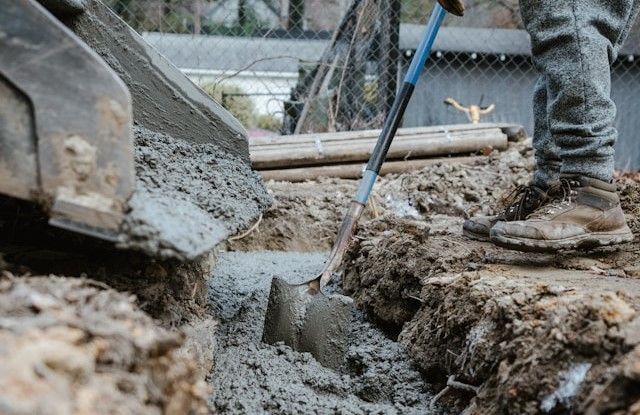The recipe and raw materials for concrete have changed little over millennia. But now faced with the problems of the 21st century, material scientists and business start-ups are working together to make stronger, more durable concrete, with a lower or zero carbon footprint.
Concrete is the second most-used substance on the planet (after water), with a total of 30 billion tonnes manufactured every year. A construction material which is playing a major role in climate change by producing 3 billion mt of carbon dioxide emissions (roughly 8% of the global human-made total). However, with the construction industry pledging to become carbon neutral by 2050, cement manufacturers and construction material suppliers are focusing on processes and raw materials which do not harm the environment, but still maintain structural integrity.

Though it makes up only 12% of concrete, 85% of its carbon emissions are caused by Portland cement. Conventional Portland cement is created by mixing calcium carbonate with clay particles and heating the mixture to 900 °C in a kiln to create calcium silicates known as clinker.
The clinker is then pulverized before calcium sulphate is added. The result is a cement which creates a binder for aggregate which can last for centuries.
But it is the heating process to make clinker that requires the energy which gives concrete such a large carbon footprint.
Moving away from this polluting manufacturing process will take a large amount of investment and considerable effort.
With this in mind, here are some of the best new raw material and concrete manufacturing approaches that could change the construction industry for ever.
Stronger Concrete means Less Concrete
Nanomaterials are used as a raw material in a variety of products to improve strength, durability, flexibility, and other properties.
Today, many companies are looking at ways to use nanotechnology to improve construction materials. By making concrete stronger, less is needed, which reduces costs and lowers environmental impact.
With this in mind, the French start-up Blackleaf employs graphene as concrete additive material that can increase compressive strength by as much as 20%. Moreover, due to their large volume to surface area ratio, as little as 0.02% concentration of nanomaterials is needed to improve the concrete.

While other companies already offer nanoadditives for concrete, Blackleaf claims that its product is unique, as it is a water-based graphene additive which is easier for concrete makers to mix in.
“It’s a huge advantage, says Blackleaf spokesperson Camila Rivera Cárcamo. “This enables the use of less concrete for the same application.”
Concrete containing graphene may also be used to create structures that block electromagnetic radiation, like those utilized by mobile phones – a function which could be particularly helpful for buildings that handle sensitive data.
Cement-Free, Wood-based Concrete
Perhaps the most novel way to lower concrete’s carbon footprint is to replace the cement used as a binder with alternative, low-carbon raw materials.
To achieve this, the Austrian start-up ParaStruct has developed an algorithm which sources local minerals and biogenic waste for use as a construction feedstock which prevents climate change whilst also lowering costs.
So far, the company has teamed-up with German 3D printing company Voxeljet to assess a variety of cement-free concretes, including a wood-based composite which seems ideal for use in interior walls, especially those requiring soundproofing.
According to the company’s founder and CEO, Georg Breitenberger, “Producing 1 m3 of concrete releases 564 kg of CO2, [whereas] ParaStruct’s cement-free compound has a CO2 footprint that is looking pretty good at 308 kg.”
While the business is still seeking investors before it can start constructing, the company has plans to raise enough money to build a pilot plant that could produce 6–7 m3 of low-carbon concrete per day.

Biochar-based Concrete Additive
ecoLocked is a start-up which claims to have made a product which can capture carbon from the atmosphere and lock it away. Using a carbon-rich material created by heating biomass in low-oxygen conditions, the company manufactures a concrete additive featuring biochar.
The result is a non-structural concrete which the company’s co-founder and chief commercial officer Steff Gerhart claims can lock-up and hold as much as 4 billion t of CO2 annually.
“We can turn buildings into carbon sinks,” said Gerhart.
Alternative Additive for Low-Carbon Cement
“Concrete is great—and probably the best construction material—as long as we reduce its carbon footprint,” said Bruno Paul-Dauphin, head of sustainable concrete solutions for the European construction firm Vinci.
Fortunately, the company provides a production process which it claims could reduce the cement industry’s carbon emissions by 40% by 2030.
“The company’s approach,” according to a recent CE&N report, “is to reduce carbon emissions by substituting standard cement clinker with a clinker generated in steel mill blast furnaces or with fly ash from coal-fired power plants. As the steel and energy industries transition to cleaner production, the availability of this substitute clinker will decline.” For this reason, the company is hard at work looking for low-carbon raw materials for use as additives for the manufacture of concrete, these include limestone filler, pozzolanic ash, and the clay mineral metakaolin.

“The lesson is that when using low-carbon concrete, there is no impact on method, no impact on materials, no excuse not to use low-carbon concrete,” said Paul-Dauphin. That is why the company used low-carbon cement when it became involved in the construction of the athlete’s village for the 2024 Paris Olympic Games.
Geopolymer Binder
Using locally available raw materials such as fumed silica, blast furnace slag, metakaolin, and fly ash, the US start-up Ultra High Materials (UHM) claims to have found a binder to replace cement.
The key to the breakthrough industrial ingredient is that instead of using water as an activator (like Portland cement), the geopolymer binder used a stoichiometrically optimized activator made up of silica, water, and an alkali, such as sodium hydroxide.
“It reduces the embodied CO2 by 80–90%,” claims UHM’s CEO Jonathan Cool. “It also performs much better. It’s stronger, faster to strength, much more durable - and we can make this at up to 65% lower cost when compared to the raw material cost of Portland cement.”
While the cement substitute is still undergoing tests, early results show the new binder really is stronger than Portland cement. The company also has as many as fifty customers waiting to begin construction with the novel material.

Clearly, demand for sustainable and eco-friendly alternatives for concrete feedstock is gaining momentum as the world seeks to reduce its carbon footprint.
From innovative additives like fly ash and geopolymer binders to cutting-edge technologies such as carbon-capture concrete, the construction industry is embracing a new era of raw materials. These alternatives offer the promise of lower environmental impact, improved durability, and reduced energy consumption.
Moving towards a greener future, it is imperative for researchers, concrete manufacturers, and raw material suppliers to continue investing in and promoting these alternative materials to create a more sustainable building environment.
You may also like to read: Ways to Ensure the Quality of a Raw Material Supplier or Three New Approaches for Improving Concrete with Nanoproducts
Photo credit: Leeroy Agency from Pixabay, Samuel Cruz on Unsplash, Fredrich Fruhling, Freepik, Rawpixel, & Macrovector